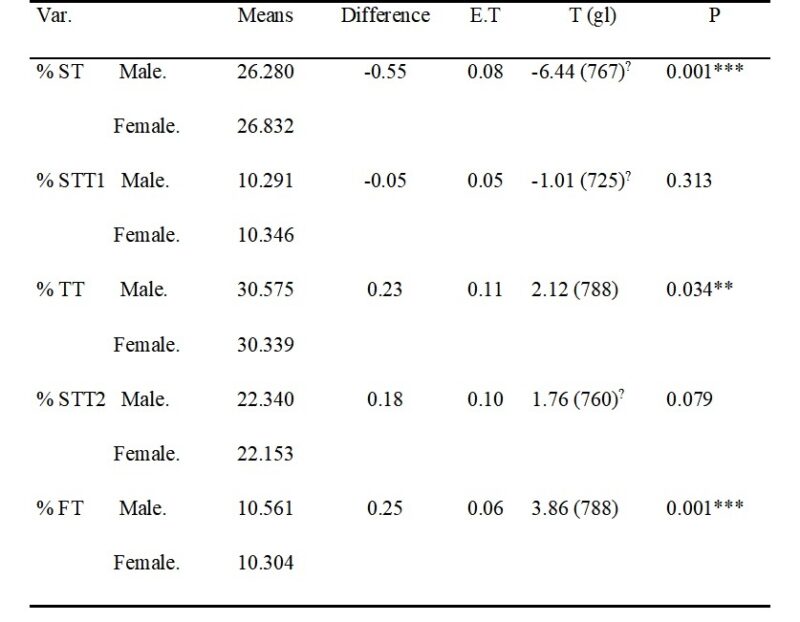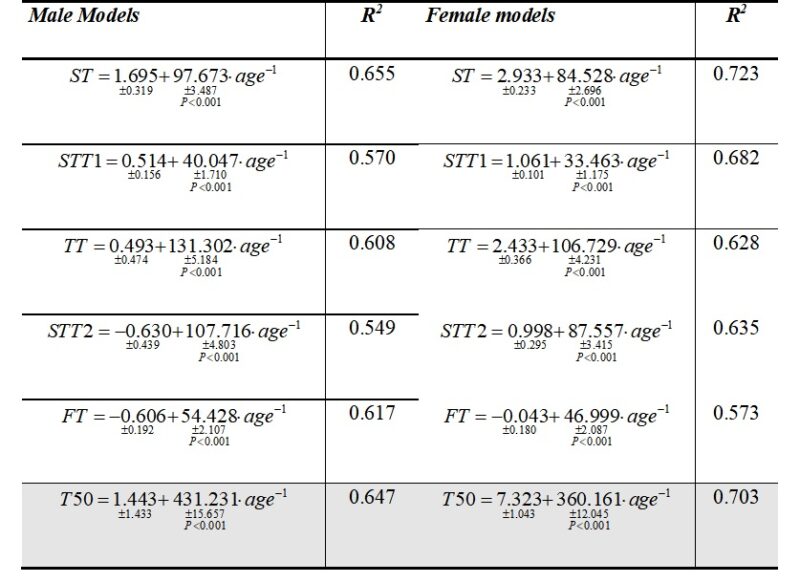Introduction and methodology:
The swimmer’s time obtained after a competitive event can be considered as an important information to help the training process. Both the swimmer and the coach need as much information as possible from that performance in order to plan and work progressions. This information will help the coach to control the training programme.
The performance of the swimmer in competition was determined by the total time from the starting signal to the end of the race (Absaliamov & Timakovoy 1990, Arellano 1991, Manson 1999). Hay, Guimaraes & Grimston (1983) abandoned this global perspective of swimming to conceive it not as a whole, but as the series of various components during the race (RC). RC data must be taken into account when analysing swimming performance during competitions. The start time (ST), swim time (STT), turn time (TT) and finish time (FT) are the RCs (Pai, Hay, Wilson 1984). Over time there have been different ways of doing the analysis of the competition. For instance, Sánchez and Arellano (2001) made a review of the parameters of competition analysis, the phases that compose it, the different passing distances as a reference and the authors who use them. In order to improve efficiency in the events, this analysis should also be carried out not only with swimmers of higher categories, but also in initial ages or age groups, as the coach must train the swimmer according to the target time and age. Performance in each of the events should improve with age in each growth period in parallel with RC.
In our Aquatics Lab, swimmers were monitored to develop a regression model of the evolution of passing times in a large sample of Spanish swimmers of regional age groups in 50 m freestyle. Regression analysis was used to discover the trend and pattern of evolution of split times by age and gender.
Results and discussion:
T-test for independent samples explains the difference between genders for each split time (table 1).

Table 1. T-test for independent samples by gender according to each percentage of part-time. *P<0.05; ** P<0.01. ***P<0.001 ●Welch’s test
The regression models obtained for each part-time according to age and gender can be seen in table 2.

Tabla 2. RC regression models by age and gender
The stability of sport performance helps researchers to predict the future success of talented young athletes and coaches to select appropriate training methods. This requires longitudinal studies. In swimming, few such studies exist. A few studies have been published in which regression equations were applied in the analysis of the HR obtained in different competitions (Absaliamov & Timakovoy 1990, Arellano, Brown et al. 1996, Nomura 2006). Johnson et al. (2009) conducted a study analysing the progression of American swimming records from 1962 to 2007 with special attention to gender differences, as well as differences in the rate of performance improvement. Costa et al. (2011) conducted a longitudinal study of 1694 elite swimmers’ best performances from age 12 to 18, highlighting the age of 16 as critical in the achievement of results and ability to predict performance at later ages. Mezzaroba and Machado (2014) also determine the influence of age, anthropometry and distance on the stroke parameters of swimmers aged 10-17 years. The results show how genotype plays a role in elite athletic performance.
Applications for coaches:
There are many variables that can affect performance variation. For a good planning and improvement of the target times, there must be an adequate progression and approach to the marks so as not to fall into overtraining the swimmer. For this reason, the evolution of times must be progressive and within limits or ranges established according to age and gender. As a reference, the times obtained in the study by Morales and Arellano (2018) are presented (see figure 1).

Figure 1. Age cut-offs by gender and reference times in age groups in the 50m freestyle.
Extended version of the study:
Morales, E., & Arellano, R. (2018). Regression analysis model applied to age-group swimmers: 50m race component times analysis. Journal of Human Sport and Exercise, in press. doi: https://doi.org/10.14198/jhse.2019.142.05
References
-Absaliamov, Timakovoy. (1990). Aseguramiento Científico de la Competición. (A.I. Zvonarev, Trans.).(1 ed.). (Vol.1). Moscow: Vneshtorgizdat.
-Arellano R. (1991). Análisis Estadístico Básico de los Resultados Obtenidos en los Campus de Promesas Realizados en Cartagena. Consejo Superior de Deportes – Federación Española de Natación.
-Arellano R, Brown P, Cappaert J, Nelson R C. (1996). Application of regression equations in the analysis of 50 and 100 m swimming races of 1992 Olympic Games. Joao Abrantes (Ed.).XIV International Symposium on Biomechanics in Sports. (pp. 274-276). Lisbon, Portugal.
-Hay J G, Guimaraes A C S, Grimston S K. (1983). A Quantitative Look at Swimming Biomechanics. In J.G. Hay (Ed), Starting, Stroking & Turning (A Compilation of Research on the Biomechanics of swimming, The University of Iowa, 1983-86) (pp.76-82). Iowa: Biomechanics Laboratory, Department of Exercise Science.
-Johnson, Michael B., Edmonds, William A, Jain, Sachin and Cavazos, Javier. “Analyses of Elite Swimming Performances and Their Respective Between-Gender Differences over Time” Journal of Quantitative Analysis in Sports, vol. 5, no. 4, 2009. https://doi.org/10.2202/1559-0410.1186
-Manson B R. (1999). “Biomechanical Race Analysis.” ASCA World Clinic: 99-114.
-Mário J. Costa, Daniel A. Marinho, José A. Bragada, António J. Silva y Tiago M. Barbosa (2011) Estabilidad del rendimiento de élite en estilo libre desde la infancia hasta la edad adulta, Journal of Sports Sciences, 29:11, 1183-1189, DOI: 10.1080 / 02640414.2011.587196
-Nomura T. (2006). Estimation of the lap-time of 200m freestyle from age and the event time. Revista portuguesa de ciências do desporto. Vol. 6, Supl. 2. (pp. 239-241).
-Sánchez J A, Arellano R. (2001). El análisis de la competición en natación: estudio de la situación actual, variables y metodología. Análisis biomecánico de la técnica en natación: Programa de control del deportista de alto nivel. R. Arellano and A. Ferro. Madrid, Consejo Superior de Deportes – Ministerio de Educación y Ciencia. 32: 9-50.


Leave a Reply